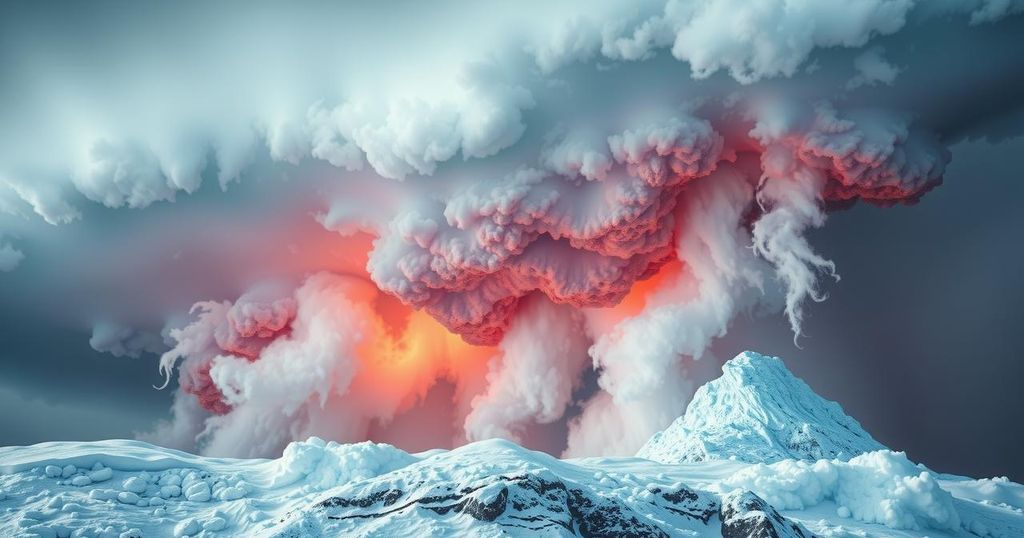The onset of 2025 has brought intense weather, including winds and wildfires in Southern California and severe winter storms in other regions, coinciding with reports that 2024 was the hottest year on record. Advances in climate science now allow researchers to connect many extreme weather events to anthropogenic climate change, redefining our understanding of how global warming influences daily weather conditions and increasing the urgency for adaptive measures.
The year 2025 has begun with an unusual surge in severe weather events, particularly in Southern California, where winds reached 100 mph and led to widespread wildfires. In contrast, other regions such as the Mid-Atlantic and the South faced harsh winter storms. Notably, scientists have reported that 2024 was documented as the hottest year on record due to anthropogenic climate change.
In prior years, it was challenging for climate scientists to link specific weather occurrences directly to human-induced climate change. However, recent advancements in climate science have established connections between climate change and increased occurrences of extreme weather phenomena including heat waves, hurricanes, and wildfires. Although not every weather anomaly can be attributed to climate change, experts like Justin Mankin from Dartmouth College suggest that it now plays a detectable role in several extreme weather events.
The distinction between climate and weather remains crucial. Climate represents the long-term patterns typically averaged over 30 years, while weather pertains to the short-term atmospheric conditions. Climate scientist Danielle Touma of the University of Texas, Austin, illustrates this by stating, “The climate is basically the clothes you have in your closet,” reflecting long-term preparation for seasonal variances.
Human-caused climate change has resulted in a rise in Earth’s temperature by approximately 1.3 degrees Celsius since the mid-1800s due to increased fossil fuel consumption. While daily weather may not always showcase drastic changes due to this gradual warming, Deepti Singh, a climate scientist with expertise at Washington State University, affirms that these elevated temperatures influence the weather almost continuously, albeit subtly.
As climate change progresses, it continues to alter atmospheric and oceanic patterns, occasionally generating unprecedented weather conditions. For instance, the 2021 heat wave experienced in the Pacific Northwest was severely intensified by climate change, reflecting novel atmospheric phenomena for the region. Alex Hall from UCLA described this situation succinctly by stating, “We’ve kind of put the climate on steroids,” hinting at the amplified extremes in weather patterns.
Through a decade of research, scientists have developed methodologies, namely “detection” and “attribution,” that allow for evaluation of climate impacts on specific weather events. By utilizing climate models, they assess the probability of various weather phenomena occurring under natural circumstances versus those influenced by human actions. This method revealed, for example, that Hurricane Helene’s rainfall was “10% more intense than it would have been” without climate change.
As the scientific community continues to evolve and refine their understanding of climate dynamics, it becomes increasingly evident that many observable weather irregularities are intricately linked to human-induced climate change, necessitating proactive measures to mitigate future impacts.
The discussion surrounding climate change and its impact on weather patterns has evolved significantly over the past decade. Initially, scientists were cautious about attributing individual weather events to climate change; however, advancements in climate modeling have revealed clear connections. The increasing global temperatures, primarily caused by human activities such as fossil fuel combustion, have become integral in understanding how climate change influences various weather phenomena. These connections are essential for comprehending the broader implications of climate change on extreme weather events and the environment.
In summary, while not all strange weather is a direct result of climate change, the evidence increasingly suggests that human activities have a profound impact on many extreme weather events. The advances in climate science allow researchers to ascertain how anthropogenic factors influence the likelihood and intensity of these occurrences, exemplified by recent studies correlating climate change with heightened weather extremes. As climate variability persists, understanding these influences is critical for addressing future challenges and formulating effective responses.
Original Source: www.mtpr.org






